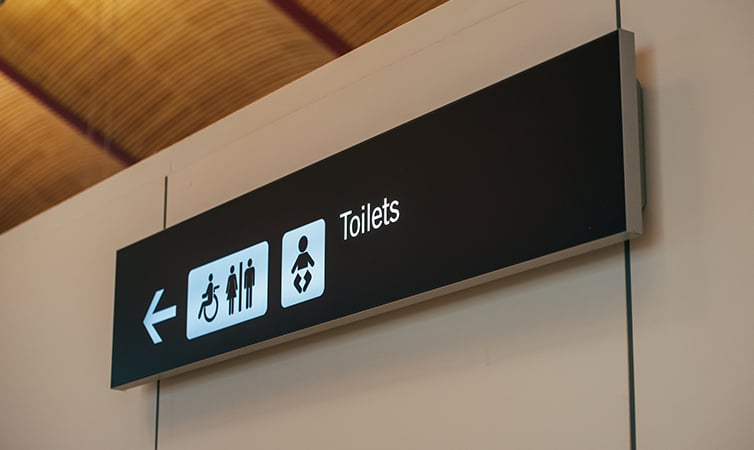Self-Cath Tips When Visiting Public Bathrooms

Using a catheter is standard for most people with spinal cord injuries. There's a variety of awesome catheters on the market that enable independence in many. It can however be a little bit tricky to catheterize in a public bathroom. Sometimes the bathroom is not 100% accessible and for many, catheterizing in a public stall, even if it is perfect, is no easy feat. With that said, there are some excellent tricks for using public bathrooms when you need to cath and we've compiled some of the best below.
Straight Cath Into Toilet
For those who are relatively agile, it is possible to straight cath directly into the toilet bypassing any urinal, making the entire deed a slam-dunk affair. This method however does require you to be able to move your hips forward in your wheelchair so that the catheter reaches the toilet. You can use a regular straight catheter without using an extender, but FYI, exactness is essential so that the urine goes exactly where you want it to.
Botox to Extend Bathroom Breaks
Another bit of advice for using a public bathroom when you catheterize is bladder botox. Many urologists now provide this popular procedure. It may be temporary, but if you get it on a regular basis (2 to 3 times a year), it can lengthen the amount of time you can go between bathroom breaks, from 1 hour to 6 hours. This amount of increased amount of time not needing to catheterize can be life-changing.
Catheter Extension Tubes
If repositioning your body to straight cath directly into the toilet is difficult, try using a catheter extension tube. These extenders attach to the end of a catheter and extend the length of your catheter up to several feet, making it very easy for the catheter to reach the toilet from your wheelchair without the need to reposition or transfer yourself. Catheter extension tubes are available in several sizes at pharmacies and Amazon.
Re-Position Body to Cath in Wheelchair
If you would rather use a urinal or another kind of receptacle, it is completely possible for those who are able to reposition their bodies to catheterize into a urinal in their wheelchair, but it can take some practice. Females recommend moving the hips forward while sitting in their wheelchairs to be able to access their urethra. For males, this entire cath method is much easier due to the placement of their urethra.
Use a Leg Bag When Going Out
It may not be ideal, but if you're accustomed to straight catheterizing through a stoma or your urethra, consider attaching your catheter to a drainage bag and keeping your catheter in while away from home. This can make it blissfully easy so that you don't have to think about needing to use the bathroom or the need to catheterize when you are out. This is especially handy when flying or traveling several hours at a time.
Family Bathrooms Can Help
Our last piece of advice - don't forget to use the family bathrooms (previously called "unisex bathrooms") if they are available. These offer a lot more wheel space for maneuvering and the privacy you need to catheterize. While adult transfer tables are rare, you can find them in some public bathrooms in US airports.
Bladder care in public may not be ideal, but it's something that should not be avoided. A healthy bladder routine is critical when you live with a spinal cord injury.
Stay Updated on Advancements On Traumatic Brain &
Spinal Cord Injuries
About the Author




